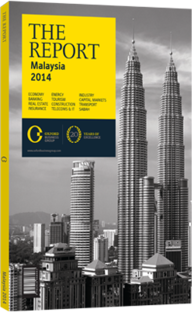Shahril Ridza Ridzuan, CEO, Employees Provident Fund (EPF): Interview

Interview: Shahril Ridza Ridzuan
How will the enactment of the Minimum Retirement Age Act 2012 impact private sector retirement savings in the long run?
SHAHRIL RIDZA RIDZUAN: One problem that Malaysia has always struggled with is the fact that when people in the private sector reach retirement age, they do not have enough savings under the EPF. There are two issues that previously exacerbated this. First, the retirement age was set at 55 for a long time, therefore people were generally retiring too early given their extended life expectancy nowadays. The second issue was that wages, in absolute terms, were quite low.
Two key reforms were pushed through before the May 2013 elections. One was the increase in the retirement age to 60 and the other was the Minimum Wages Order, which set the minimum wage for private sector workers in peninsular Malaysia at RM900 ($281) per month. The current generation of workers may not feel the full benefit of these changes, but many new entrants to the workforce will benefit as wages rise. Moreover, by the time contributors reach the age of 60 they will have had five extra years of working life to boost their EPF contributions.
Going forward, Malaysia is striving to develop a clearly defined multi-pillar approach to social protection in which the EPF looks after people’s mandatory savings, the government or social services take care of health and education, and the Private Retirement Schemes (PRS) initiative allows people to save their excess income in a regulated manner with certain tax benefits. At the end of 2013, there were roughly 70,000 individuals participating in PRS, with about RM300m ($94m) in assets under management.
Participation in PRS is still quite small considering the size of Malaysia’s population but it is growing rapidly, driven by the tax benefits that PRS offers. Furthermore, the government announced in the last budget a matching scheme whereby if you are in your twenties and you invest in PRS the government will match the total amount that you have contributed.
What role can foreign financial institutions play in developing the private pension industry?
SHAHRIL: Essentially, the capital markets in Malaysia are quite developed and, in terms of representation, are fairly active. Under the social securities framework, eight PRS licenses were awarded, of which a number went to foreign firms. What we are seeing today is that the foreign companies that were given the licenses are now farming out some of the money to fund managers coming into Malaysia. As that pool of assets builds up, there will be more scope for other fund managers to enter the Malaysian market.
The EPF introduced new rules to raise the minimum savings rate for contributors. How will this affect the country’s vibrant unit trust industry?
SHAHRIL: We have a concept of basic savings, which states that, by the time you reach 55, you should have built up a sufficient amount of money in your account to provide you with a minimum pension of about RM820 ($256) for the next 20 years. This rate is tied to the basic government pension. Under the rules, you need to maintain a certain amount of savings with us; however, you can withdraw any amount above this to put into your own investments such as unit trusts, equities or other instruments.
We have this basic savings concept to make sure that the contributor will have a set amount of money that is reinvested by the EPF. If we were to allow everyone to withdraw all of their savings and put them into high-risk investments and, if they then lost their money, it would become a social burden on the state. People would not have enough money to be able to retire. When we switched from the old basic savings rate to the new basic savings rate, we calculated that the new total amount of assets under management available for the unit trust industry would drop by only 15%. Furthermore, in terms of eligibility, the EPF still has approximately 1.5m members who are eligible to withdraw money for unit trust schemes.
You have reached the limit of premium articles you can view for free.
Choose from the options below to purchase print or digital editions of our Reports. You can also purchase a website subscription giving you unlimited access to all of our Reports online for 12 months.
If you have already purchased this Report or have a website subscription, please login to continue.

